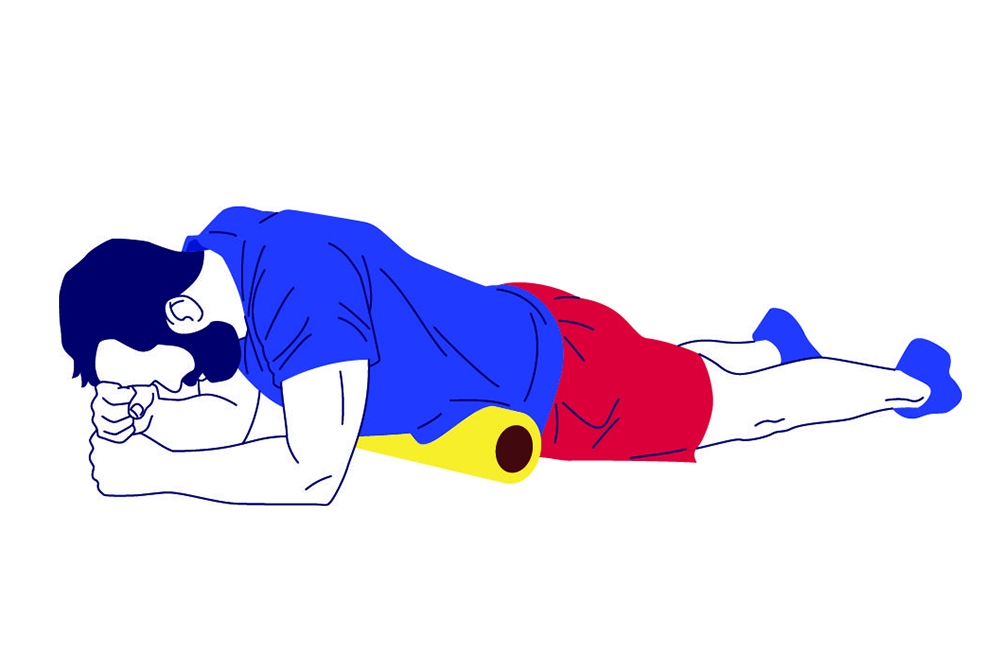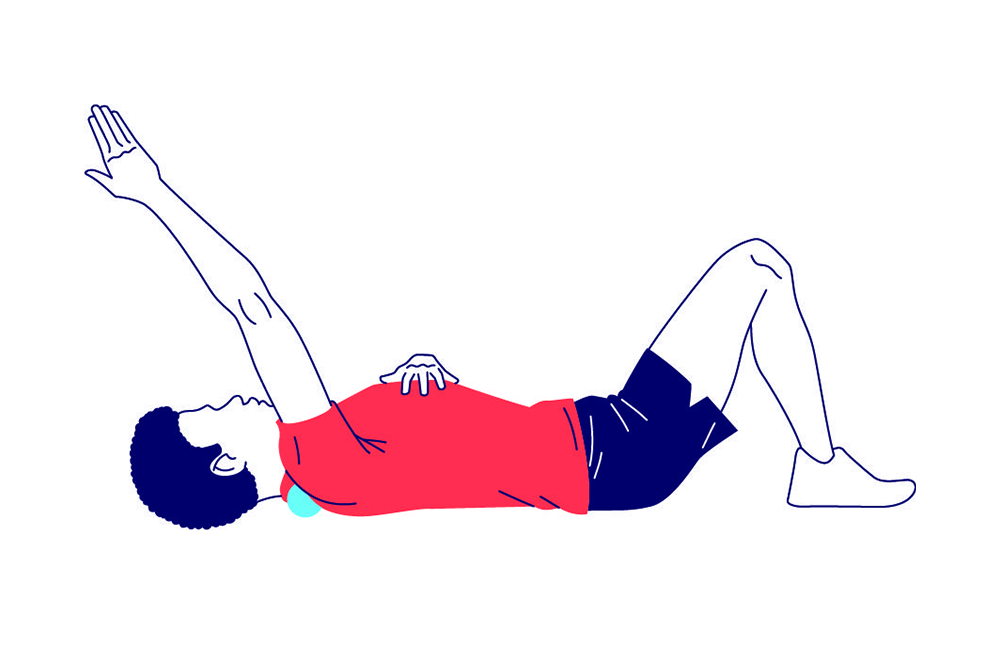How Mobility Improves Breathing and Cycling Performance
Upper-body mobility will make you stronger - and happier - on the bike and off it - here are three simple exercises to maximise it.
When you think about the best ways to optimise performance, you probably imagine performing exercises to boost endurance or quad strength, staying hydrated, eating more of the best foods for recovery and maybe investing in high-quality gear. But when was the last time you thought about something you do every day—something you’re doing right this moment—that is, breathing?
In the new book Built to Move: The Ten Essential Habits to Help You Move Freely and Live Fully, Kelly Starrett, D.P.T., and his wife and cofounder of The Ready State, Juliet Starrett, point out that most athletes overlook how they breathe. And that oversight could hinder performance. Tuning in and training for optimal oxygen intake might just be one crucial detail that can separate you from the pack, according to the Starretts.
“Cycling is an aerobic sport and looking at how effectively we can move air in and out will improve our enjoyment on the bike,” adds Kelly, also the coauthor of Becoming A Supple Leopard.
Ahead, learn more about what most people get wrong about breathing, how mobility improves breathing, and how that pays off in better biking.
What Happens When We Breathe During Rides
“Athletes understand that breathing can have a really important down-regulation effect, and certainly when we’re redlining, we’re very aware that there’s just not enough oxygen in the room, at any altitude. But when we start to examine breathing efficiency and breathing mechanics, all of the sudden, a whole new world is open to us,” Kelly says.
As you inhale, air enters your lungs to help deliver oxygen from the air into your blood, according to the National Institutes of Health (NIH). From there, the oxygen reaches cells and is used by the mitochondria within them to produce energy. A by-product of that energy creation is carbon dioxide. So with each exhale, carbon dioxide transfers from the blood to the lungs, and this gas waste is eliminated from the body.
In a perfect world, each inhale you take results in an expansion around the entire torso. Your diaphragm should move. Your ribs should move. Your upper back should be able to expand when you’re under peak ventilation (a.k.a. when you’ve taken a full inhale).
When maintaining an ideal posture, breathing works very efficiently. But many of us—whether we’re crouched over our keyboards or our handlebars, or we simply lack the mobility to have flexible spines and ribs—aren’t exactly acing the biomechanics to support the highest level of gas exchange.
“Most athletes adopt positions where their mechanics that enhance and maintain respiration end up being a little bit compromised,” Kelly says.
While slouching over in the shape of a “C” is aerodynamic, when you try to take a big breath, you’re likely going to feel a limitation in your ability to maximize each inhale and exhale. That’s because not only are your lungs compressed, but your diaphragm (the major muscle involved in respiration) is also not able to put in full reps.
A more optimal breathing position: Your head in line with your pelvis and ribs—the exact opposite of the most common biking posture, especially for those who might be a little stiff or shy in upper body strength. Stiffness or slouching can limit the total “circumferential excursion” of the torso, Kelly says. In other words, it can limit how much air you take in, because you fully expand and contract the diaphragm.
A rider has five points of contact that offer opportunities to create pretty decent stability to the machine, Kelly explains, both hands, both feet, and your seat. “A good bike fit honours your internal geometry and anthropometry. However, within that context, finding an internal organisation that allows you to breathe deeply might vary and take some practice,” Kelly says.
For situations where aerodynamics rule, there might be a tradeoff between being able to fully ventilate and still be in a tuck position. Overall, finding the correct balance is the goal.
When we feel out of breath on the bike, “many of us think we’re working at the limits of our ventilation capacity. But really, we’ve adopted shapes that are less effective to be able to breathe through the diaphragm, to access the ribs, to be able to breathe in the chest,” Kelly says. When you’re in a position that allows for these breathing mechanics to take place, you’re able to breathe more effectively and therefore, ride more efficiently.
What It Means to Breathe Better
There are three fundamentals to breathing well:
- Breathing spaciously, also referred to as “diaphragmatic breathing,” which involves breathing in a way that moves your stomach rather than your chest
- Breathing through the nose, mouth breathing is an evolutionary “back-up”
- Breathing to maximise carbon dioxide tolerance—carbon dioxide tolerance refers to your brain’s tolerance for handling higher blood levels of carbon dioxide, and when we do this, we can actually access more oxygen
As noted in that last bullet, one of the goals of mastering the art of breathwork for athletes is to become more “carbon dioxide tolerant,” Kelly says. Doing so means that we can perform more work aerobically instead of anaerobically, and we may be better able to stick with rides for the long haul without bonking.
One of the best ways to become more carbon dioxide tolerant? Shut your mouth. “Nose-only breathing signals a bunch of things within the body that are very complex. It takes some resistance off the diaphragm, which may allow it to work more effectively. The diaphragm can then contract a little more forcefully,” Kelly explains.
3 Ways to Breathe Better and Therefore, Bike Better
1. Focus on Nasal Breathing
No matter how you breathe, it’s vital to remember that you need to do just that—even while scaling a hill with a grade of 20 percent or more. Many of us naturally feel the urge to hold our breath for a couple seconds to grind through aerobic duress to try to simplify the tasks at hand for the body, but that’s not doing our power any favours.
The first order of business, according to Kelly, is to cultivate an awareness and practice of nose-only breathing. Start by attempting to breathe only through your nose during a warmup or easy ride. Try taking a 10-second inhale while riding at a light clip. Hold your breath at the maximum expansion level of your lungs and rib cage, then exhale out your nose. Repeat this at the start of every minute.
“See how long you can go—how many seconds, how many pedal strokes, it doesn’t matter—and then just recover and repeat that five to 10 times and you’ll see you’ll be much better off when you need to start getting on the pedals and pushing faster or harder,” Kelly says.
The reason nasal breathing is so beneficial? If we open our mouths and start panting right away, we actually inhibit our ability to strip oxygen off of the haemoglobin (red blood cells) and deliver it to the muscles to score the biggest energy boost. As mentioned, it also helps with that carbon dioxide tolerance.
2. Exhale Through Your Mouth to Power Up
If you sprint or ride more intensely, try to maintain nose-only breathing as long as possible, then switch to an in-through-the-nose, out-through-the-mouth pattern.
This will help you leverage that coveted carbon dioxide tolerance, which translates to an improved ability to generate more effective aerobic power.
The world’s best athletes can easily push nearly 90 percent of their maximum heart rate while still breathing in through their nose only and out through their mouths, Kelly adds. This is why you might see elite cyclists wearing nose strips—to keep ventilation systems open.
3. Loosen Up
Next, to allow for the aforementioned spacious breathing, you have to maintain some trunk mobility. Just like stiff quadriceps might alter your pedal stroke, a too-tight back, abs, hips, and pelvis may not allow for very efficient pedlalling and it may cause over tension in the system.
It sounds simple, but it will feel easier to achieve better ventilation mechanics if you have the range of motion to do so.
The Best Mobility Exercises to Help Your Posture for Better Breathing
When you get a PR at a race or crush that loop you always ride at a quicker clip than ever, you might think you’re working at the limit of your abilities. Chances are high that you’re not, Kelly suggests. Mastering nose breathing, reducing stiffness, and adjusting posture to allow you to breathe easier may help you ride more, push more intensely (both aerobically and strength-wise) and recover more effectively.
“Ventilation and an awareness of rib cage and upper back expansion is especially impactful in an aerobic-based sport, like biking,” Kelly summarises. “Ultimately, whoever does the most work and remains the freshest wins,” and increasing ventilation can help you be that winner.
Consider adding these three exercises to your training routine to help you feel unstoppable even on the steepest and toughest parts of your ride.
1. Trunk Mobilisation

Lie facedown on a foam roller or larger ball (like a volleyball), placed just below ribs and pressing on abdomen, arms in front of you. Inhale through nose for 4 seconds, hold breath for 4 seconds, and contract abs. Exhale for 5 or more seconds, relaxing the trunk. Take a breath or 2 between contract and relax cycles. Next, move side to side on the roller, still breathing slowly. If you find a tight spot, pause, contract the muscles, and inhale for 4 seconds, then exhale and relax for 8 seconds. Repeat this sequence for 10 minutes max.
2. T-Spine Mobilisation 1

Lie face up, knees bent, and feet planted. Place a small ball in middle of back, between spine and one shoulder blade. Start at neck area. Take a full breath in, then out. Next, try to lift hips off floor to create more pressure, making sure to maintain deep breathing. Hold for several minutes. Repeat with ball on other side of spine.
3. T-Spine Mobilisation 2

Exercises and descriptions adapted from Built to Move: The Ten Essential Habits to Help you Move Freely and Live Fully by Kelly Starrett and Juliet Starrett. Published April 4, 2023 by Alfred A. Knopf, an imprint of The Knopf Doubleday Publishing Group, a division of Penguin Random House LLC. Copyright © 2023 by Kelly Starrett and Juliet Starrett.
READ MORE ON: flexibility mobility mobility exercises upper back upper back strength



